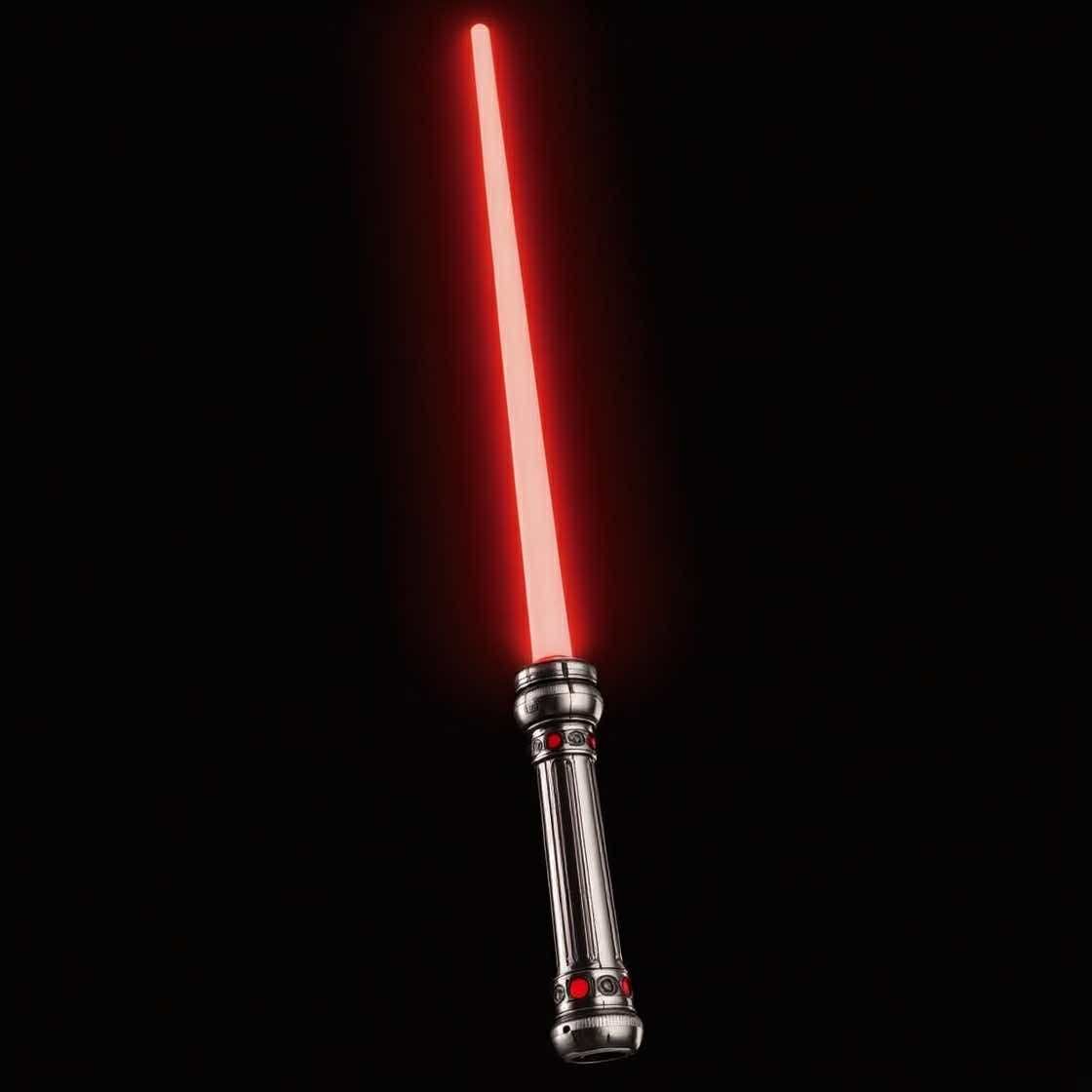Count Dooku Lightsaber Replica: The Elegance of a Sith Lord’s Curved Blade
Few lightsabers in the Star Wars galaxy exude the same level of grace, refinement, and danger as that of Count Dooku, the former Jedi Master turned Sith Lord. Known as Darth Tyranus after his fall to the dark side, Count Dooku was a duelist of unmatched finesse—his lightsaber reflecting the sophistication, precision, and arrogance of a noble warrior trained in an older age.
Portrayed by Christopher Lee, Count Dooku was introduced in Attack of the Clones and quickly established himself as one of the most formidable lightsaber duelists in the saga. His fighting style, combined with his uniquely curved-hilt lightsaber, made him both iconic and deadly.
For collectors, duelists, and fans of the Clone Wars era or the Sith Lords, a Count Dooku lightsaber replica is a one-of-a-kind piece—one that speaks to the artistry of blade combat and the fall of one of the Jedi Order’s finest.
This guest blog explores the legacy, design, and features of Count Dooku’s lightsaber and what to look for when purchasing or customizing a replica.
The Legacy of Count Dooku’s Lightsaber
Count Dooku was a master of Form II: Makashi, the dueling-focused lightsaber form. Unlike the flashy acrobatics of Ataru or the brute strength of Djem So, Makashi was a style rooted in precision, economy of motion, and control. Dooku was among the last Jedi trained in this ancient art before the rise of blasters and the decline of lightsaber-to-lightsaber combat.
To complement this refined style, Dooku designed a lightsaber that matched his needs perfectly. The result: a curved-hilt lightsaber that gave him superior wrist control, allowing for tight blade angles and elegant parries.
It was a saber designed not for battlefield chaos, but for dueling supremacy—and in Dooku’s hands, it became the extension of a master swordsman.
Curved Elegance: Hilt Design and Features
The first thing that stands out about Count Dooku’s lightsaber is the curved hilt—a design almost completely unique among Force users. This curvature wasn’t for aesthetics alone. It provided key combat advantages and shaped the entire profile of the weapon.
Hilt Overview:
- Curved Ergonomics: The elegant bend in the hilt allowed Dooku to apply wrist-based leverage for precise movements and quick redirection.
- Emitter: Slim and flared, with polished accents that mirror the weapon’s noble aesthetic.
- Guard/Quillon: A knuckle guard curves along the underside of the hilt, resembling a fencing foil or rapier, offering additional hand protection.
- Activation Switch: Subtle, low-profile switch placed near the grip’s center for quick access.
- Grip Area: Smooth or ridged metallic texture, depending on the version, often silver with black or chrome finishes.
- Pommel: Sleek end cap with sound vents, subtly flared to complete the weapon’s balance.
- Length: Approximately 13–14 inches due to the curvature.
This hilt wasn’t meant for brute strength. It was an elegant tool of precision—designed for a master who saw combat as an art, not just war.
The Crimson Blade: Sith Power in Elegant Form
Count Dooku wielded a single red lightsaber, a hallmark of the Sith, created using a synthetic or bled kyber crystal. The blade was known for its controlled and calculated strikes, not wild aggression.
Blade Specifications:
- Color: Deep crimson red
- Length: 32 to 36 inches (standard)
- Material: Duel-ready polycarbonate with mid-grade or heavy-grade durability
- Lighting Options: Pixel-blade (neopixel) or base-lit LED
- Effects: Smooth ignition, unstable flicker (Sith-style), clash flash, tip drag, and lock-up modes
In a replica, the red blade is often enhanced with subtle flickers or pulse effects, reflecting the darkness that flowed through Dooku’s saber as he fought Jedi like Obi-Wan Kenobi, Anakin Skywalker, and Yoda.
Soundboards and Sith Sound Fonts
High-end Dooku replicas often include custom soundboards that replicate his unique saber sounds. These effects reflect the elegance and restraint of his dueling style—less chaotic than other Sith, but more refined.
Key Features:
- Smooth Swing: Real-time motion tracking for immersive audio
- Dooku-Specific Fonts: Including ignition, hum, and clash sounds from Attack of the Clones and The Clone Wars
- Blaster Deflect & Lock-Up Effects: Adds realism during staged duels or performances
- Gesture Activation: Twist or swing-to-ignite options
- Voice Lines: Some replicas include Dooku dialogue, such as “I’ve become more powerful than any Jedi.”
- Rechargeable Battery Systems: USB-C or removable lithium-ion with smart charging ports
Soundboard systems may allow you to switch between Sith and Jedi fonts, but for Dooku replicas, the emphasis is often on classical Sith elegance rather than chaotic energy.
Replica Variants: Display vs. Combat
1. Display-Grade Replicas
- Precision-machined hilts
- High detail accuracy with polished chrome or electrum plating
- Blade not included or not intended for combat
- Ideal for collectors and high-end displays
2. Duel-Ready Replicas
- Reinforced emitter and grip structure
- Designed for dueling, stage combat, or choreographed performances
- Includes sound and lighting systems with protective chassis
- Blade retention systems built for stability
3. Hybrid Replicas
- Screen-accurate design with functional electronics
- Compatible with pixel-blades and gesture controls
- Best for cosplay, conventions, and light dueling
Customization and Advanced Features
While Count Dooku’s lightsaber is already unique, many fans go a step further by adding custom features:
- Realistic Weathering: To reflect use in battles across the Clone Wars
- Crystal Chamber Reveal: With a visible synthetic red kyber crystal pulsing inside
- Enhanced Sound Profiles: With alternate Sith fonts or duel music
- Hilt Stand and Engraved Plaque: For a museum-quality presentation
- Combat Grip Inserts: For improved handling during duels
Some builders also explore “what if” designs—such as Dooku with a second saber or a hybrid Jedi/Sith build using a blue blade but maintaining the curved hilt design.
Display and Maintenance Tips
Proper care enhances both the lifespan and the appearance of a Count Dooku replica:
- Use a stand or wall mount that highlights the saber’s curvature
- Polish chrome parts with a microfiber cloth to maintain luster
- Remove the blade when storing to reduce tension on the emitter
- Keep electronics dry and avoid high heat or humidity
- Disconnect power for long-term storage to prevent battery damage
If you’re displaying the saber alongside Dooku-themed props, consider adding Sith robes, a hologram of Darth Sidious, or a bust of the character for an immersive setup.
Legacy
Count Dooku’s lightsaber represents a lost era of Jedi mastery, reborn through the lens of Sith ambition. As both a Jedi Master and a Sith Lord, Dooku’s journey was one of intellect, ideology, and disillusionment. His saber—a curved blade of elegance and power—tells that story with every flick of the wrist.
Owning a Count Dooku lightsaber replica means more than collecting a Sith weapon. It’s about honoring a character who challenged the Jedi Order, manipulated galactic events, and wielded his blade with unmatched poise.
For fans of Christopher Lee, The Clone Wars, or those who appreciate dueling precision over brute strength, Dooku’s saber is a crown jewel in any Star Wars collection—a symbol of calculated rebellion and refined darkness.







